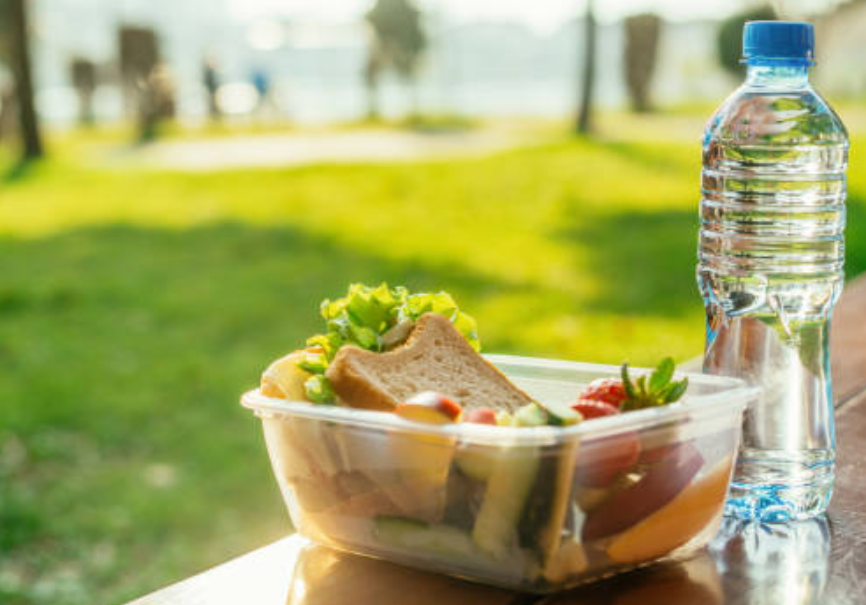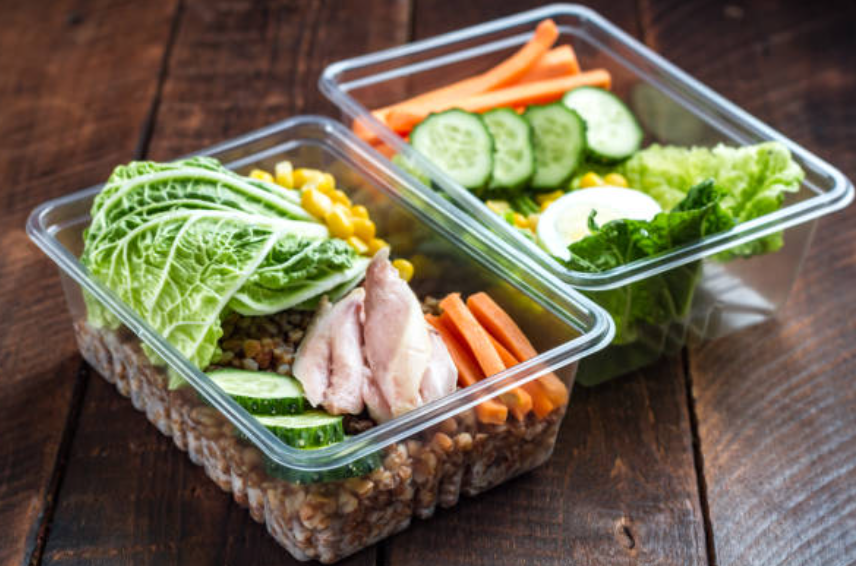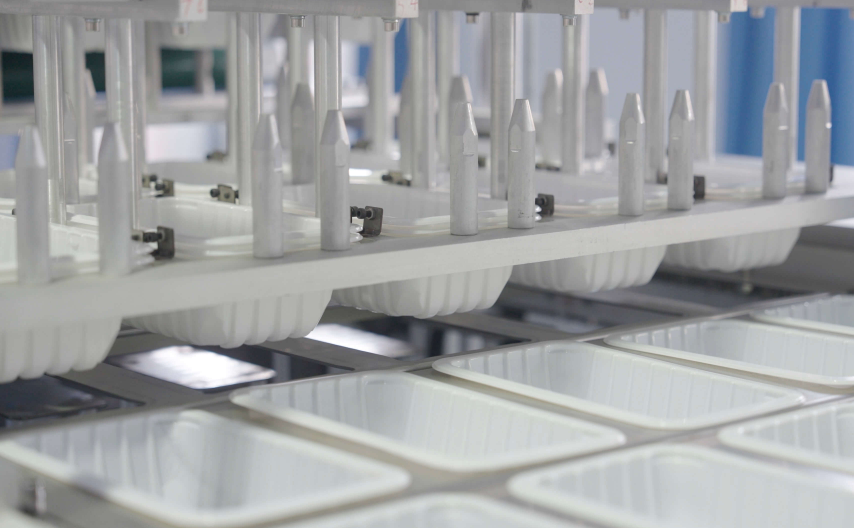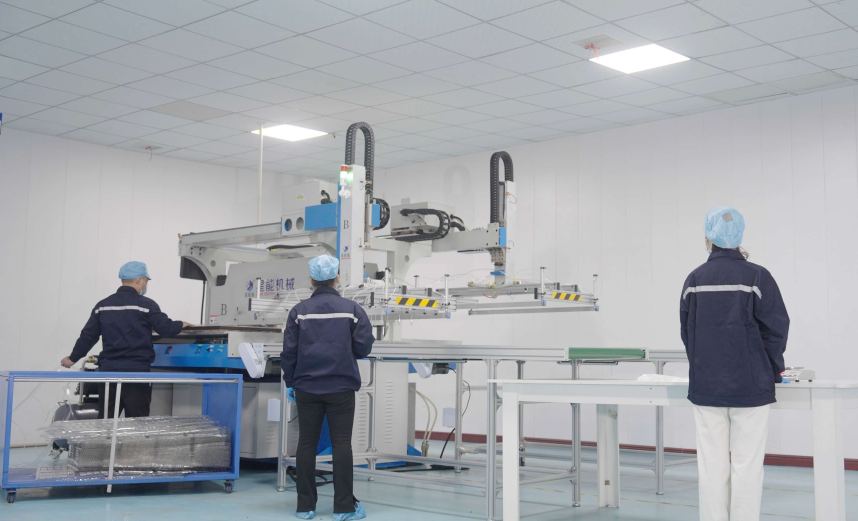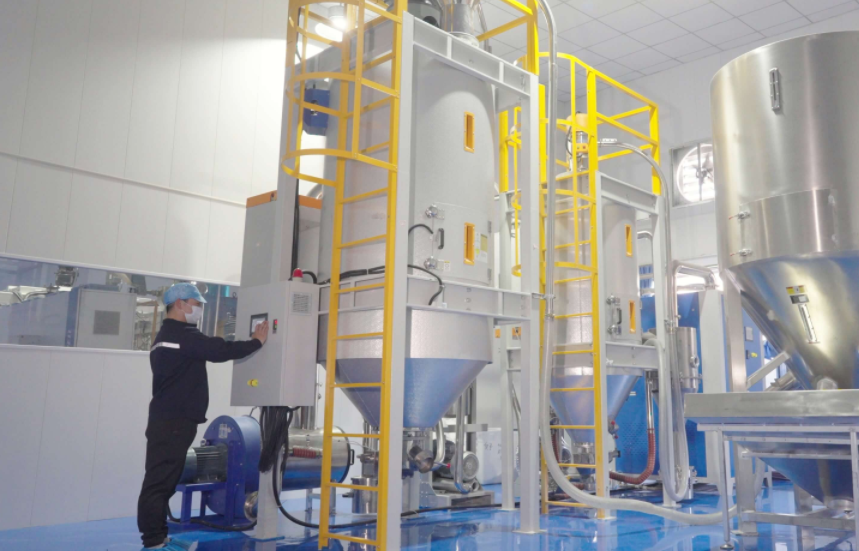Material Selection and Preparation
Making food-grade plastic containers starts with choosing the right materials. The most common plastics used for these containers are PET, HDPE, PP, and LDPE, all known for their safety, strength, and ability to resist chemicals.
Material Preparation Steps
Once we choose the plastic resin, it usually arrives in pellet or granule form. Then we go through a few steps to prepare the material for processing:
- Drying: The pellets are dried to get rid of moisture, usually at temperatures between 150-180°C for 4-6 hours.
- Mixing: We blend additives, such as colorants, UV stabilizers, or antioxidants, with the base resin to improve its properties.
- Filtering: The material is passed through fine mesh screens to remove any contaminants and ensure purity.
- Testing: We conduct quality checks to confirm the material’s strength, clarity, and safety.
Custom Formulations
For specific uses, like containers for hot-fill processes, we may create custom formulations. For example, heat-set PET is made to stay clear and strong when exposed to high temperatures.
Once the material is ready, we feed it into equipment like injection molding machines or extrusion lines to begin shaping the containers.
Extrusion Process
The extrusion process is essential for making food-grade plastic containers. It involves melting plastic pellets and forcing the molten plastic through a die to create a continuous profile. This profile is then cooled and shaped into containers. Below is an overview of the main steps in the extrusion process:
Key Steps in the Extrusion Process
-
Material Selection and Preparation
Food-safe plastics, such as polyethylene (PE), polypropylene (PP), and polyethylene terephthalate (PET), are chosen. The pellets are dried to remove moisture, ensuring the plastic melts evenly during the process. -
Feeding
The plastic pellets are placed into the extruder hopper, preparing them for the next stage. -
Melting and Mixing
Inside the extruder, the screw mechanism heats the barrel and melts the plastic. This occurs at temperatures between 150°C and 300°C, depending on the plastic type. The plastic is mixed thoroughly to achieve a uniform molten consistency. -
Pressurization
The rotating screw builds pressure, pushing the molten plastic toward the die. This ensures smooth and consistent flow through the system. -
Shaping
The molten plastic is forced through a die, shaping it into the desired form. It could be a tube, sheet, or another profile, depending on the product’s requirements. -
Cooling
After shaping, the extruded plastic is cooled quickly, usually with air or water. This solidifies the material and helps maintain its shape. -
Cutting/Forming
The continuous extrusion is cut into specific lengths or further formed into the required container shapes, ready for additional processing.
Common Extrusion Methods for Food Containers
-
Sheet Extrusion
This method creates flat plastic sheets, which can later be thermoformed into containers like trays and lids. -
Blown Film Extrusion
This process produces thin plastic films, commonly used for bags and wraps that hold food items. -
Tubing Extrusion
Tubing extrusion makes hollow plastic tubes, which are then cut and sealed into bottles or similar containers.
Molding Techniques
Molding techniques are key to making food-grade plastic containers, with injection molding being the most widely used method. This method involves several steps to create strong, reliable, and safe containers for food storage.
Injection Molding
Injection molding is the main method for making food-grade plastic containers. The process starts by heating plastic pellets or resin until they melt. The molten plastic is then injected into a mold cavity under high pressure. Once injected, the plastic cools and hardens in the mold, taking the shape of the container. The materials used for this include polypropylene, polyethylene terephthalate (PET), and high-density polyethylene (HDPE).
The steps in the injection molding process are: 1. Material feeding – Plastic pellets are added into the machine. 2. Melting/plasticizing – The pellets are heated until they melt. 3. Injection – The molten plastic is injected into the mold. 4. Cooling – The plastic cools and solidifies. 5. Ejection – The finished container is taken out of the mold.
Injection molding cycle times range from 15 to 60 seconds, depending on the size and complexity of the part. Multi-cavity molds are often used to produce multiple containers at once, improving production efficiency.
Other Molding Techniques
Other molding techniques are used for specific types of food containers:
- Blow molding: Used to create bottles and jars.
- Thermoforming: Best for making thin-walled containers and lids.
- Compression molding: Common for making screw caps and closures.
Advanced methods like co-injection molding allow for multi-layer containers with better barrier properties. In-mold labeling adds labels during the molding process, giving the product a smooth, seamless look.
Quality Control and Testing
Quality control and testing are key to ensuring that food-grade plastic containers meet safety standards and work well in real-world conditions.
Physical Testing Procedures
We perform several physical tests to check how durable and reliable the containers are:
- Drop Tests: We drop containers from heights of 0.8 to 1.2 meters to see how well they handle impacts and maintain their shape.
- Compression Tests: We apply forces between 250 and 500 N to test the container’s ability to resist pressure without failing.
- Leak Tests: We use vacuum decay or pressure differential methods to check for leaks, ensuring the container maintains its seal in different conditions.
- Seal Integrity Tests: We measure the burst pressure of the container, usually between 50 and 100 kPa, to confirm the seals hold tightly under pressure.
Finishing and Packaging
After the injection molding or thermoforming process, food-grade plastic containers go through several finishing and packaging steps to meet quality and safety standards.
Trimming and Deburring
Excess plastic, or flash, is removed from the edges using trimming machines or hand tools. Rough edges are smoothed to create a clean, safe finish.
Quality Control
Quality control ensures that each container meets industry standards. Common inspection methods include: – Visual inspection to check for cracks or discoloration. – Dimensional measurements to confirm size and shape. – Leak testing to check if containers are sealed properly. – Impact resistance testing to test the container’s ability to withstand handling.
Surface Treatment
Some containers receive additional treatments to improve their properties: – Corona treatment to enhance surface adhesion for labels or printing. – Antistatic coatings to reduce dust buildup. – UV protection coatings to prevent damage from sunlight.
Packaging
Once finished, the containers are packaged for shipment. Common packaging methods include: – Stacking and shrink-wrapping containers on pallets for bulk shipment. – Packing in corrugated boxes for smaller quantities. – Bagging in polyethylene bags to protect against contamination.
Labeling
Each package is labeled with important product information, such as lot numbers and manufacturing details.
Storage
Packaged containers are stored in clean, temperature-controlled warehouses to prevent contamination and maintain food-grade standards before being shipped to food manufacturers.
These finishing and packaging steps are often automated and take place in clean-room environments to ensure high food safety standards. Traceability systems track containers throughout the production and packaging process.
Manufacturing Environment and Practices
Food-grade plastic containers are made in controlled environments to ensure both safety and quality. There are strict hygiene and quality control measures throughout the production process.
Clean Room Facilities
Production areas use clean room environments with advanced filtered air systems to eliminate contaminants. Workers must wear protective gear, including hairnets, gloves, and clean room suits. Equipment is cleaned and inspected regularly to maintain cleanliness and minimize contamination risks.
Good Manufacturing Practices (GMP)
Manufacturers follow Good Manufacturing Practices (GMP) to ensure safety and meet compliance standards. Key practices include: – Documented cleaning and sanitizing procedures to prevent contamination of equipment. – Pest control measures to keep pests out of production areas. – Employee hygiene training to ensure all staff maintain high cleanliness standards. – Lot traceability systems to track each batch of containers. – Quality control tests done at different production stages to catch any issues early.
Automated Production Lines
Automated production lines help reduce human contact, lowering the risk of contamination. Containers move through fully enclosed conveyor systems, from molding to packaging, in a controlled, isolated environment.
In-Line Quality Checks
Continuous in-line quality checks are done with vision systems and sensors to detect defects in real time. Regular sampling tests dimensional accuracy, strength, and contamination levels, ensuring only safe, durable containers are made.
Food-Safe Materials
Food-safe lubricants and additives are used in machinery to prevent contamination. All chemicals used in production are FDA-approved for food contact, ensuring containers meet food safety standards.
Sealed Packaging
To avoid contamination after production, containers are packaged in sealed environments. Many facilities also use laminar flow clean air systems, which keep the air clean around the containers until they are safely packed.
Regular Audits and Compliance
Manufacturing facilities undergo third-party audits to confirm they follow GMP standards. Major food companies also conduct their own supplier audits to ensure quality practices are maintained.
Environmental Monitoring
Environmental monitoring programs test for microbial contamination on surfaces and in the air. If contamination levels exceed safe limits, corrective actions are taken immediately to maintain the quality of the manufacturing environment.
Typical production lot sizes for food-grade plastic containers range from 10,000 to over 1 million containers. There are detailed changeover procedures between production runs, which include thorough cleaning and sanitization of equipment.
Sustainability Considerations
Sustainability is crucial in producing food-grade plastic containers. As concerns about the environment grow, manufacturers are taking steps to reduce their ecological impact.
Recycled Content
Many food-grade plastic containers now use post-consumer recycled (PCR) materials. For example, certain PET containers can be made with up to 100% recycled content, helping to reduce the need for new plastic.
Waste Reduction
Manufacturers are using improved mold designs and production methods to reduce waste. Some companies have reached less than 0.1% material waste in production, significantly cutting down on excess scrap.
Biodegradable Alternatives
Plant-based materials, like PLA (polylactic acid) made from renewable resources like corn or sugarcane, are now used to create compostable food containers. These biodegradable options provide an environmentally friendly alternative to traditional plastic.
Lightweighting
Innovative design techniques help manufacturers use less plastic in each container. This approach has led to a 10-20% reduction in overall material usage, which lowers the environmental impact.
Chemical Safety
As health concerns grow, manufacturers are moving to BPA-free and phthalate-free formulations in food-grade plastic, ensuring safer materials for food packaging.
Carbon Footprint
Some companies are reducing their carbon footprint by investing in renewable energy sources. They aim to reduce carbon emissions by 30-50% in the next few years, taking important steps toward a sustainable future.
By adopting these sustainability measures, the food-grade plastic container industry is working to reduce its environmental impact while meeting the strict requirements of food safety.

